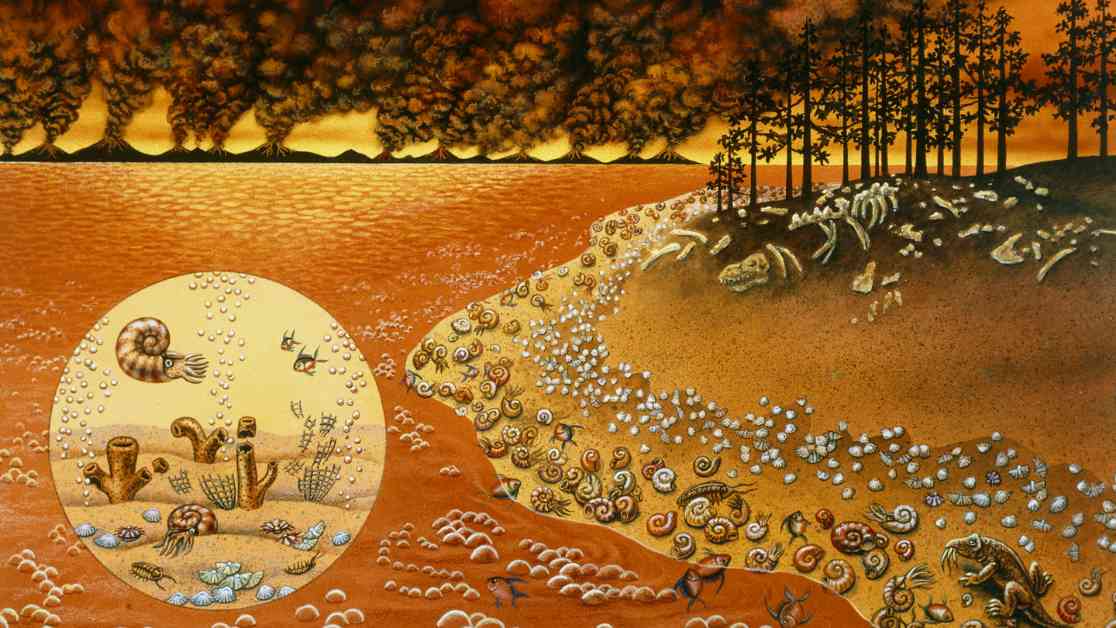A series of extreme changes in climate conditions could have led to the most significant mass extinction in Earth’s history. By reconstructing ancient sea surface temperatures, ocean and atmosphere circulation, and interactions with landmasses, scientists have uncovered a world plagued by prolonged periods of droughts, wildfires, and flooding.
The catastrophic impact of “mega El Niños” following a spike in global temperatures, caused by massive volcanic eruptions in present-day Siberia, resulted in the eradication of around 90 percent of ocean species and 75 percent of land species approximately 252 million years ago. This new study sheds light on the intricate nature of this mass extinction event, revealing a more nuanced understanding than previously believed.
While the rise in sea surface temperature and the subsequent decrease in the ocean’s ability to hold oxygen were devastating for marine life, the reasons behind the extinction of terrestrial organisms and their inability to migrate to cooler regions remained unclear. Short-term climate oscillations may hold the key to these questions, as species are greatly influenced by weather patterns in addition to overall climate conditions.
Researchers have utilized fossilized teeth of ancient fishlike animals to calculate seawater temperatures and have developed updated computer simulations to reconstruct Earth’s climate during the Great Dying. The team’s findings suggest that as carbon dioxide levels increased and global temperatures rose, the intensity and duration of El Niño-like warming periods grew, leading to widespread environmental devastation.
The effects of these mega El Niños would have been too extreme for land organisms to survive, resulting in widespread forest die-offs, increased global temperatures, and intensified weather extremes. The self-perpetuating cycle of warming gases emitted by volcanoes further exacerbated the climate crisis, causing dramatic shifts between extreme heat, drought, and flooding across the globe.
As the climate roller coaster became increasingly hostile, species struggled to adapt, ultimately succumbing to the harsh conditions. Moving forward, researchers are interested in exploring how certain periods in Earth’s history were more resilient to climate chaos and mass extinction events, while others were more vulnerable.
By examining annual records preserved in fossil cave stalactites and tree rings, scientists hope to uncover evidence of the mega El Niños in the fossil record. This ongoing research aims to provide a deeper understanding of past climate fluctuations and their impact on ancient ecosystems, shedding light on the factors that determine resilience or vulnerability to catastrophic climate events.












